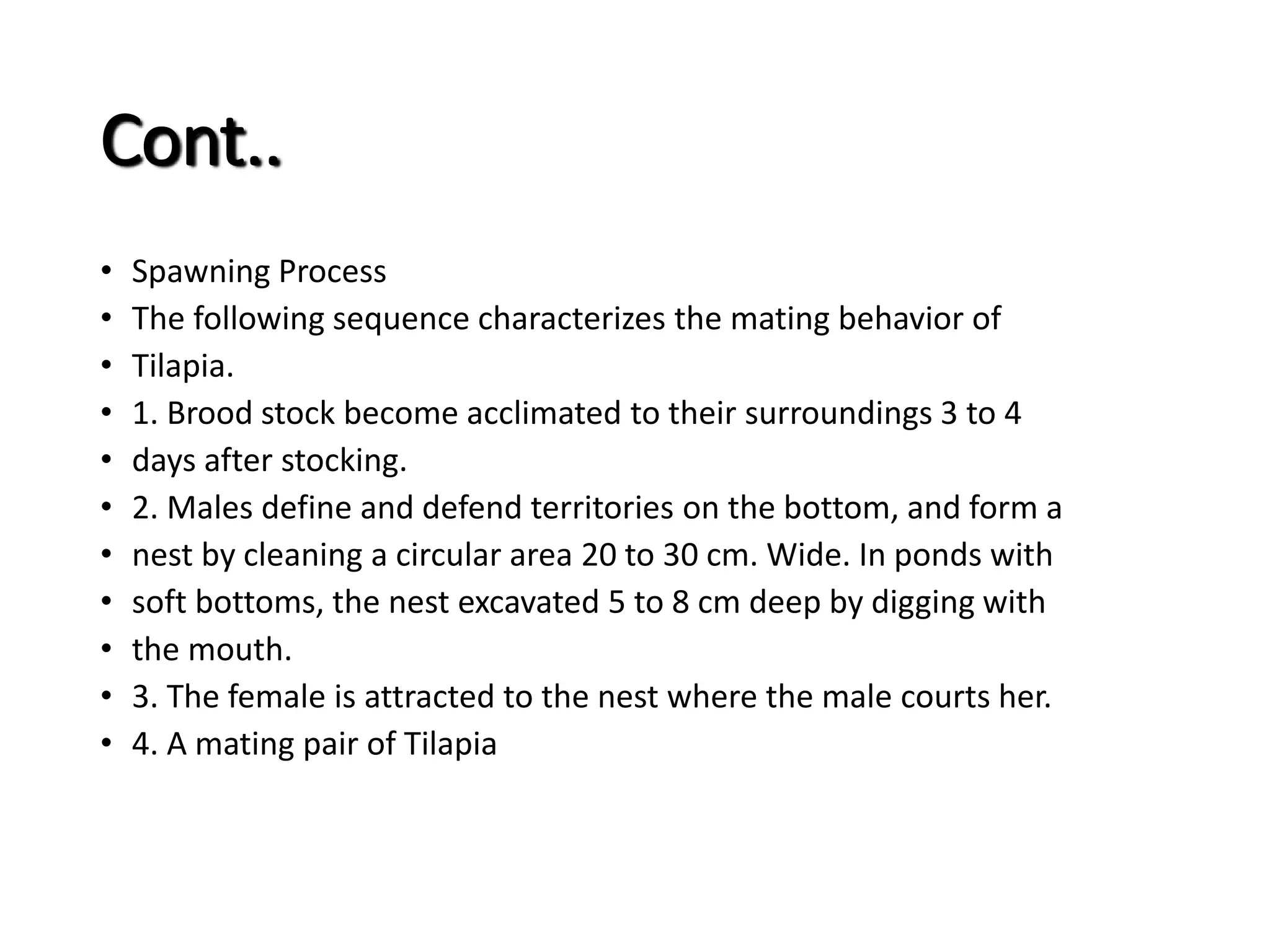Tilapia, especially Nile tilapia, is one of the most important and widely farmed fish species globally due to its fast growth, high tolerance, and ability to thrive in various environments. The document discusses tilapia breeding methods such as mixed-sex and mono-sex culture. It also introduces GIFT tilapia, which was developed through selective breeding to have significantly faster growth rates than native tilapia strains. GIFT tilapia has generated more income and employment for farmers while boosting tilapia production.







































